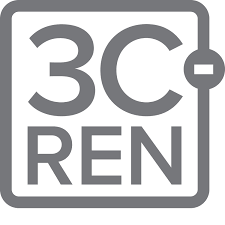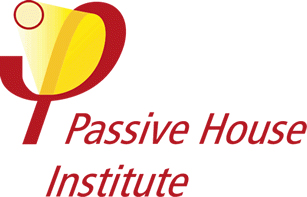The entire team from Passive House California (PHCA) wishes you a Happy New Year 2022.
Upcoming opportunity for Certified Passive House training | 3C-REN
It will be conducted in the tri-county area of Ventura, Santa Barbara, and San Luis Obispo counties. If your zip code is within that area, and you are potentially interested, please take a few moments to fill out the form. If you are interested but live and work outside of the 3C-REN area, you are also welcome to fill out the form and include questions about whether and how you…
Happy Holiday Season
It’s good for the climate! And for us!
Passive House Institute points way to climate-friendly buildings. The topic of energy efficiency is often woefully neglected in discussions on climate protection. However, buildings-related emissions can only be significantly reduced by consuming less energy for heating and cooling. The Passive House Institute presents its proposed solutions for a climate-friendly building stock in three “building blocks”: A substantially higher level of energy efficiency of buildings; on-site generation of renewable energy; and a…
Passive House California Newsletter | December 2021
EpiPHany Corner | Position High-Performance as the Baseline
You cannot discern how a building will perform by appearance alone. The home pictured below must be at least code compliant in order to pass inspection, but it might be a high-performing building in terms of energy efficiency, comfort, indoor air quality, durability, and environmental responsibility. It may even qualify as a Passive House. You need additional evidence from modeling and testing to make a determination. The key word here…
Thank you, Mitsubishi Electric for renewing your Passive House California sponsorship.
Thank you, Mitsubishi Electric for renewing your Passive House California sponsorship. Mitsubishi Electric’s leadership in variable capacity heat pumps makes them an excellent fit for high-performance homes and Passive House California is proud to have them continue as a Supporting Sponsor. Their all-electric HVAC systems are quiet and efficient, available in a variety of ducted and ductless styles as well as capacities, and they allow for zoning. For those reasons,…
Seasons Greetings from iPHA
From all of us at iPHA, we wish you a very happy holiday season and all the best for the new year! It has been quite a year for us all, with our joint #EfficiencyFirst campaign, welcoming new members and launching further advocacy efforts just to name a few! It’s amazing what the iPHA network can achieve when we work together! For now, we wish you a wonderful holiday with family…
You are not Alone – International Passive House Affiliates
You are not alone ! The International Passive House Association (iPHA) is the international umbrella organization for Passive House. Passive House California (PHCA) is a proud iPHA member since 2012. All iPHA affiliates are independent, member driven organisations. An affiliate organization does not exclusively represent a geographic region and multiple affiliate organizations can be, and are, active to promote the Passive House Standard in the same country. Click here to meet…
Passive House California welcomes Minotair as a Silver Sponsor through 2022
Minotair manufactures state-of-the-art, ultra-high-efficiency HVAC solutions that are all electric, heat-pump based, and an excellent fit for Passive House projects. They offer all-in-one HVAC/D solutions that provide balanced fresh air ventilation, heating, cooling, and dehumidification—no outdoor unit. In addition, their medical-grade air filtration and additional air scrubbing capacity enables recirculation, which is a significant plus in California, as we deal with increasing smoke from wildfires and in dense urban areas…
Passive House Certification Worldwide
Passive House stands for healthy, comfortable living and impressive energy efficiency, regardless of the local climate. Over the last several years, Passive House has rapidly increased in popularity, with over three million square meters total floor area certified worldwide (the graph shows the stats as of June, 2021). 1 Square Meter = 10.76 Square Feet Source: International Passive House Association
PHCA & NYPH | Durable & Resilient Retrofit
Solving with stone wool insulation – Presented by Rockwool Globally, existing buildings account for approximately 30% of final energy demand and CO2 emissions. Typical renovation rates are 1-2% of the building stock per year, with an average energy use intensity (EUI) reduction of less than 15%. However, to reach sustainable development and climate targets, EUI reductions should be between 30-50%. In addition to energy and emissions conservations, building retrofits improve…
































